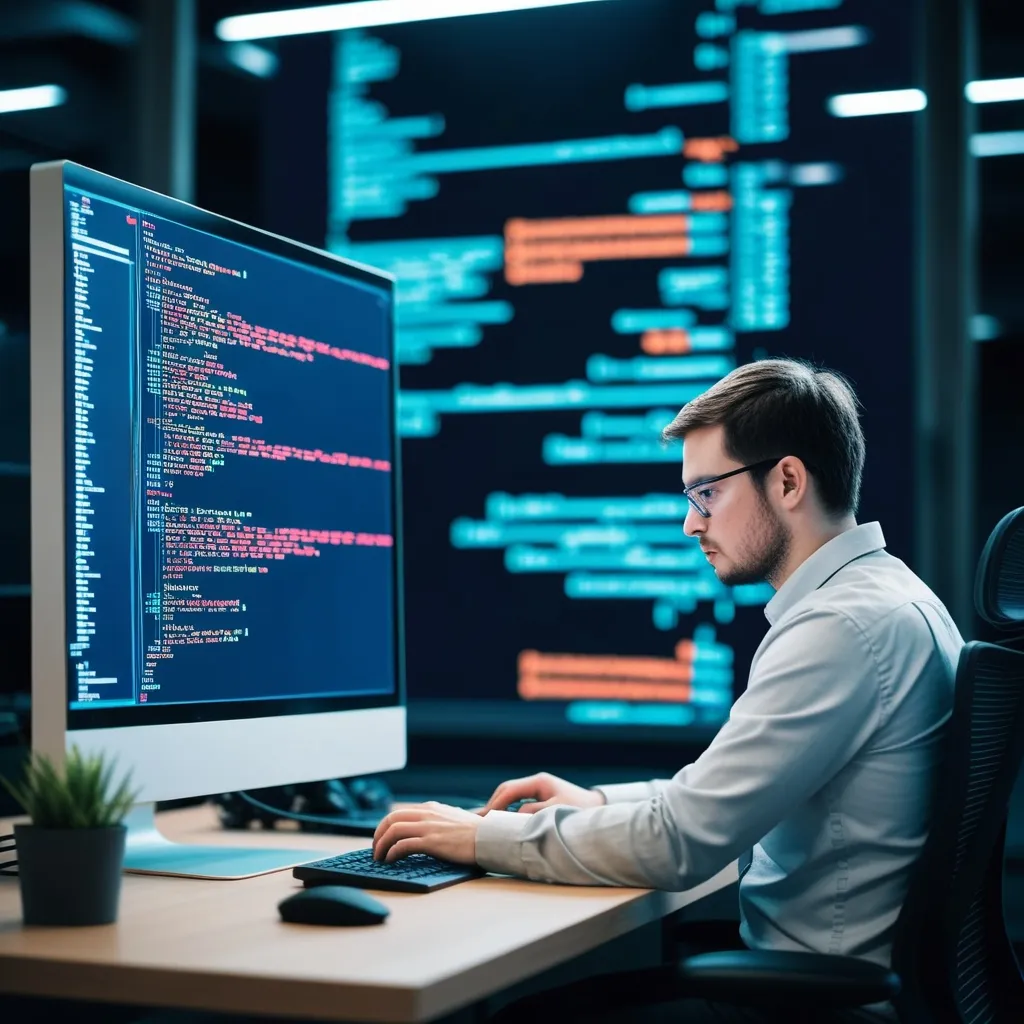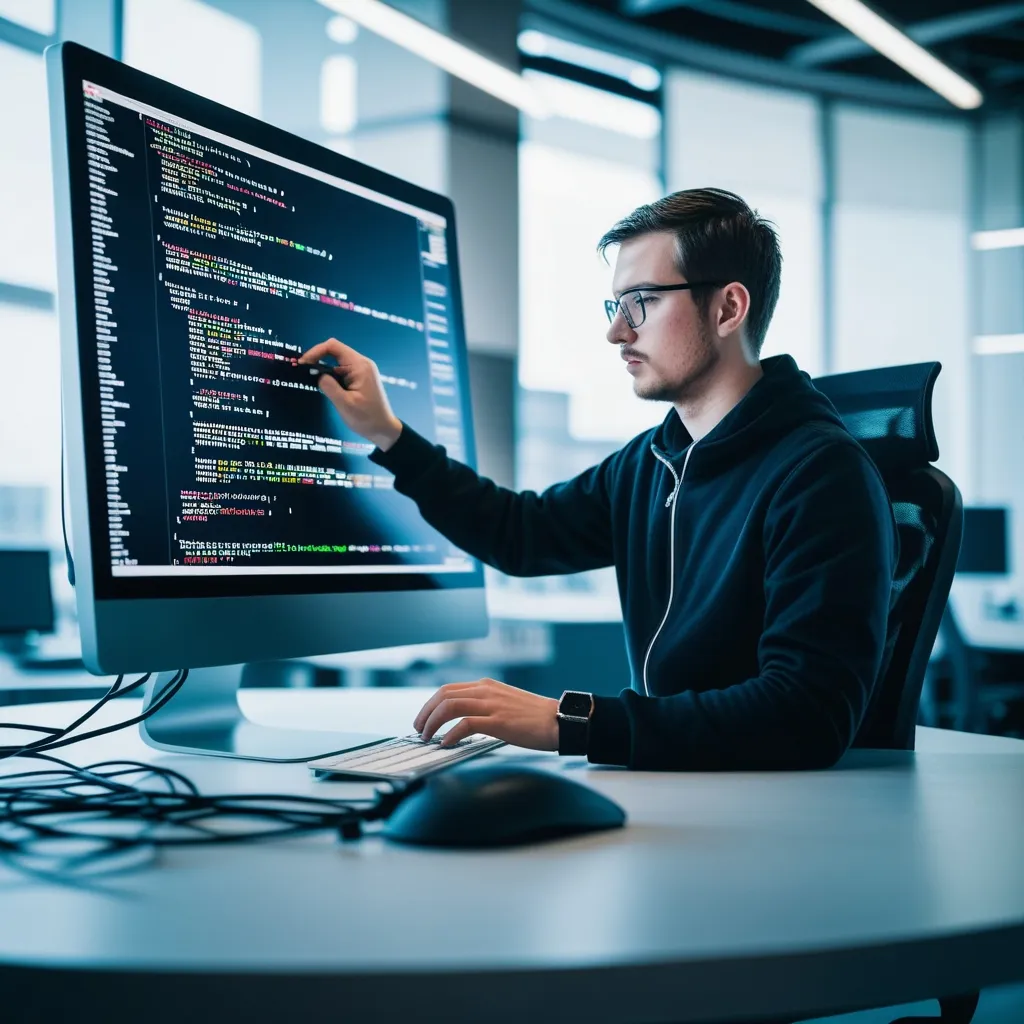Understanding Next.js: The Ultimate React Framework for Modern Web Development
Alright, let’s talk about Next.js and why it’s causing a buzz in the web development world. This isn’t just another framework; it’s a game-changer built on top of React. Whether you’re a seasoned developer or just getting your feet wet, Next.js is worth a look for your next project. Let’s break it down and see what makes Next.js so special.
Next.js is like the Swiss army knife for web developers. It brings together all the fantastic stuff you get from React and throws in a bunch of extra features that make life a lot easier. We’re talking about things like routing, data fetching, and server-side rendering right out of the box. It’s like having a complete toolbox for building high-performance, full-stack web apps.
Imagine you’re putting together a modern web application. You’ve got a ton of stuff to think about: user interfaces, routing, data fetching, rendering, integrations, infrastructure, and performance. Plus, you need your site to handle traffic without breaking a sweat. Next.js bundles it all together, letting you write both front-end and back-end code in the same project.
Killer Features of Next.js
Server-Side Rendering (SSR)
First off, Next.js has killer support for server-side rendering (SSR). Normally, you’d need a separate server to handle SSR, but Next.js does it natively with Node.js. What’s the big deal? Well, this boosts performance and makes your site super friendly to search engines. Basically, search engines can crawl and index your pages more easily, which is a win for SEO.
Static Site Generation (SSG)
Next up is static site generation (SSG). This feature lets you pre-generate HTML files at build time. Perfect for sites with static content like blogs or marketing landers. Your pages load faster and get indexed better by search engines, giving an all-around snappy experience to your users.
Easy Routing
Routing can be a headache, but not with Next.js. It gives you a file-based routing system. Want different pages for your e-commerce site? Easy. Next.js lets you manage everything seamlessly, from your homepage to user profiles and product listings. No fuss, no mess.
Smooth Data Fetching and Caching
Dynamic web apps need to fetch and cache data efficiently, and Next.js handles this like a pro. Built-in support for fetching data from APIs means your app loads faster and offers a smoother user experience.
Where to Use Next.js
Blogs and News Sites
For blogs and news websites, Next.js is the perfect match. SSG and SSR ensure that your articles are easily crawled by search engines, making your SEO game strong. Plus, it pairs well with headless CMS platforms, so content writers can add new articles without needing a developer.
Marketing Sites and Landing Pages
Marketing sites and landing pages need to be blazing fast and SEO-friendly. Next.js nails this with its image optimization and fast loading times. First impressions are everything, and a fast site keeps users engaged.
E-commerce Platforms
Building an e-commerce platform? Next.js has got you covered. With its robust performance features, it can handle complex requirements like fast loading times and efficient data fetching. It even comes with built-in features for high-performance e-commerce sites, making it easier to roll out your store.
Developer Experience
One major reason developers dig Next.js is because it makes their lives easier. It offers a unified approach to both front-end and back-end development. No more switching between different codebases or dealing with cumbersome environments. It’s all streamlined, making it simpler to manage and deploy your project.
Performance and Scalability
Next.js is all about performance and scalability. With the latest React features and tools like Turbopack, your application becomes fast and scalable. You can get your site up and running without worrying it’ll crumble under heavy traffic.
Getting Started with Next.js
Starting with Next.js is a breeze. You can deploy it on Vercel, the frontend cloud platform from the creators of Next.js. Pre-built solutions and starter kits for different kinds of projects are available, whether it’s an e-commerce site, blog, or personal portfolio. You don’t need to reinvent the wheel, just hit the ground running.
Wrap it Up
Next.js is more than just a framework; it’s the full package for modern web development. With its standout features like server-side rendering, static site generation, and smooth integration for hybrid apps, you’ve got all you need to deliver fast, high-performing, SEO-friendly web applications.
To sum it all up, Next.js simplifies web development by offering a unified approach for both front-end and back-end tasks. With its emphasis on performance, efficiency, and an excellent developer experience, it’s no wonder it’s becoming a go-to choice for developers and big companies alike. If you’re aiming to build top-quality web applications with ease, Next.js deserves your attention.






